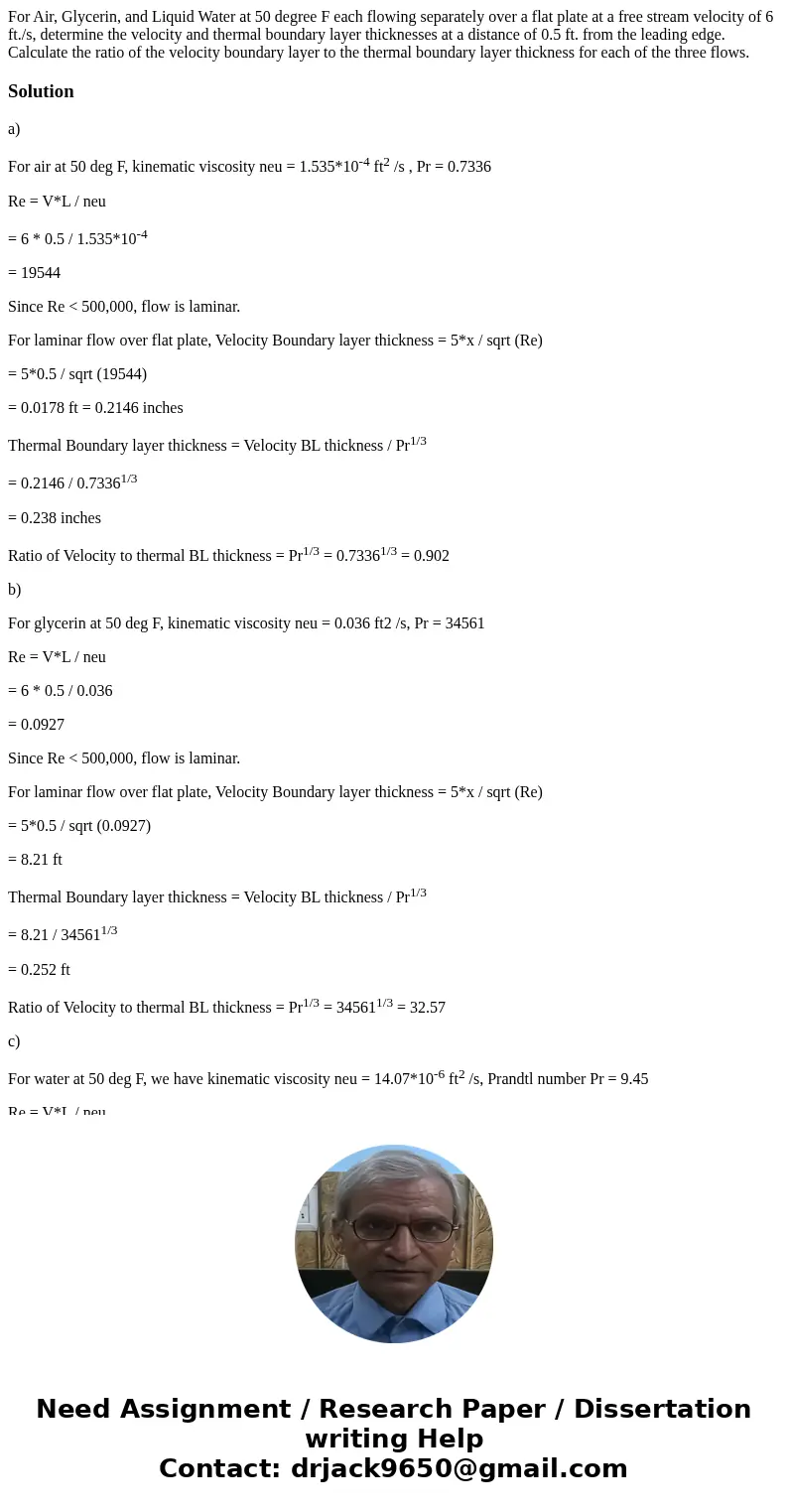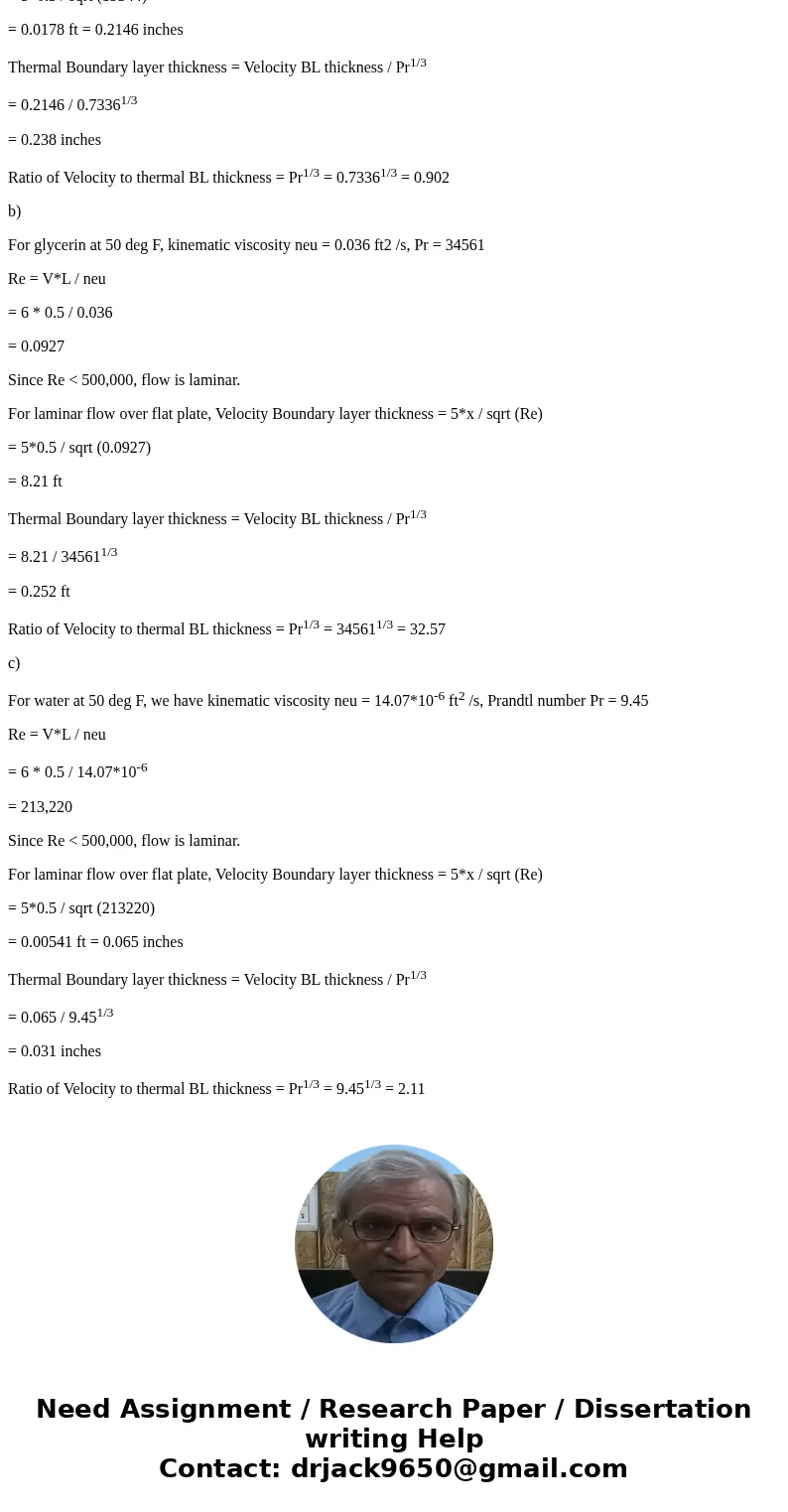For Air Glycerin and Liquid Water at 50 degree F each flowin
Solution
a)
For air at 50 deg F, kinematic viscosity neu = 1.535*10-4 ft2 /s , Pr = 0.7336
Re = V*L / neu
= 6 * 0.5 / 1.535*10-4
= 19544
Since Re < 500,000, flow is laminar.
For laminar flow over flat plate, Velocity Boundary layer thickness = 5*x / sqrt (Re)
= 5*0.5 / sqrt (19544)
= 0.0178 ft = 0.2146 inches
Thermal Boundary layer thickness = Velocity BL thickness / Pr1/3
= 0.2146 / 0.73361/3
= 0.238 inches
Ratio of Velocity to thermal BL thickness = Pr1/3 = 0.73361/3 = 0.902
b)
For glycerin at 50 deg F, kinematic viscosity neu = 0.036 ft2 /s, Pr = 34561
Re = V*L / neu
= 6 * 0.5 / 0.036
= 0.0927
Since Re < 500,000, flow is laminar.
For laminar flow over flat plate, Velocity Boundary layer thickness = 5*x / sqrt (Re)
= 5*0.5 / sqrt (0.0927)
= 8.21 ft
Thermal Boundary layer thickness = Velocity BL thickness / Pr1/3
= 8.21 / 345611/3
= 0.252 ft
Ratio of Velocity to thermal BL thickness = Pr1/3 = 345611/3 = 32.57
c)
For water at 50 deg F, we have kinematic viscosity neu = 14.07*10-6 ft2 /s, Prandtl number Pr = 9.45
Re = V*L / neu
= 6 * 0.5 / 14.07*10-6
= 213,220
Since Re < 500,000, flow is laminar.
For laminar flow over flat plate, Velocity Boundary layer thickness = 5*x / sqrt (Re)
= 5*0.5 / sqrt (213220)
= 0.00541 ft = 0.065 inches
Thermal Boundary layer thickness = Velocity BL thickness / Pr1/3
= 0.065 / 9.451/3
= 0.031 inches
Ratio of Velocity to thermal BL thickness = Pr1/3 = 9.451/3 = 2.11


 Homework Sourse
Homework Sourse